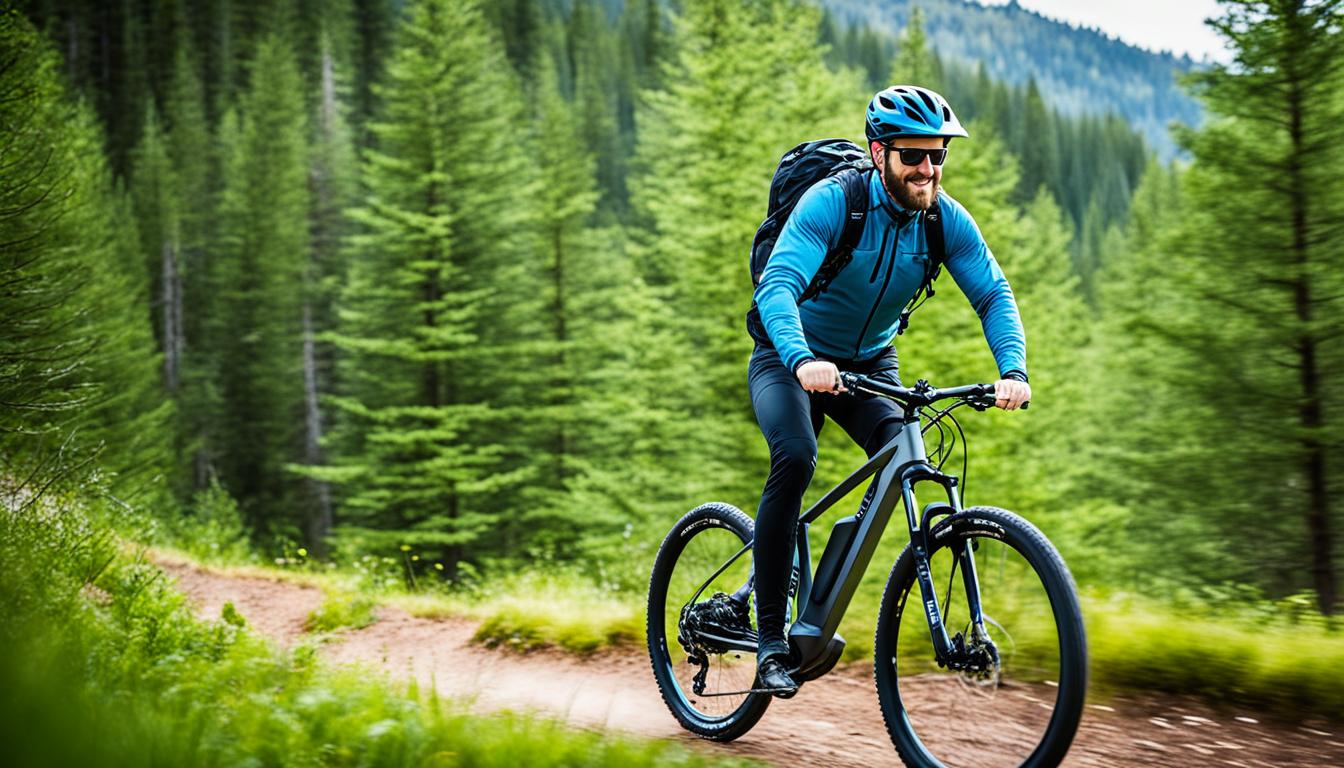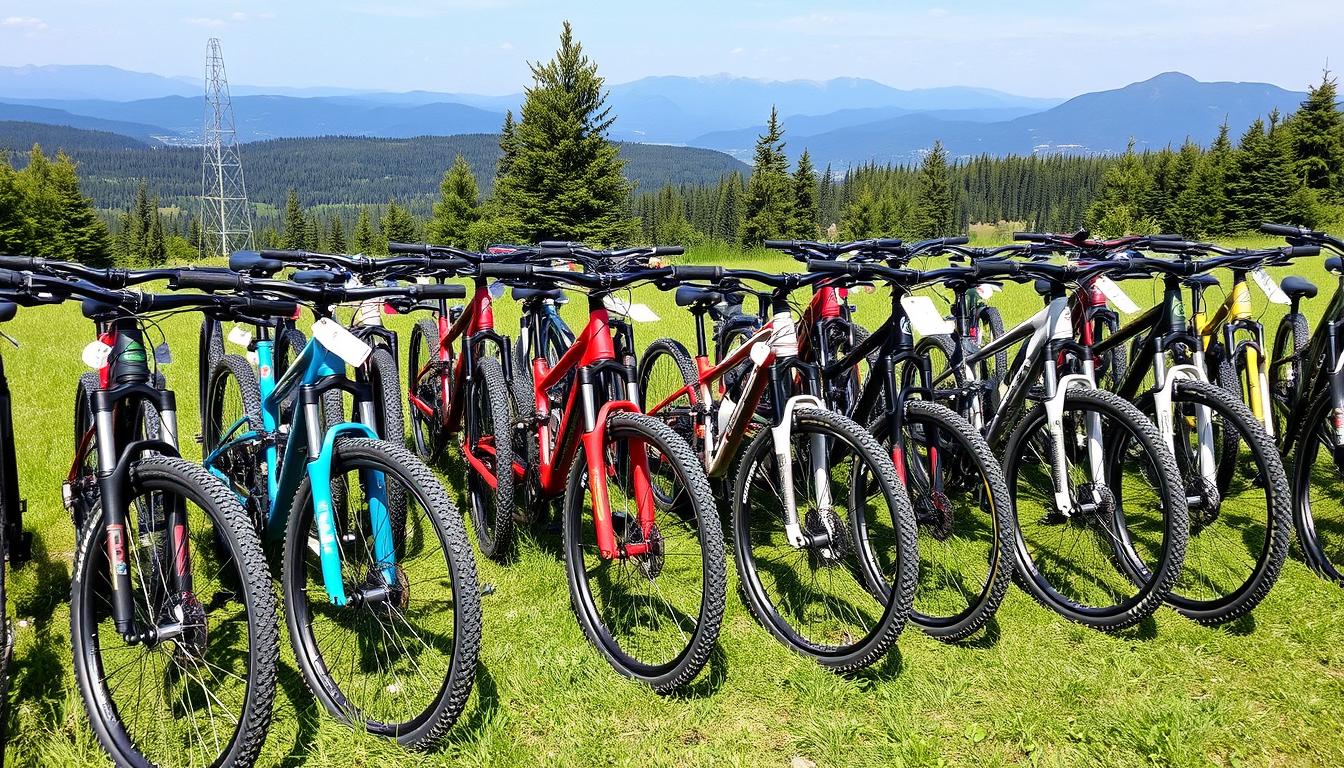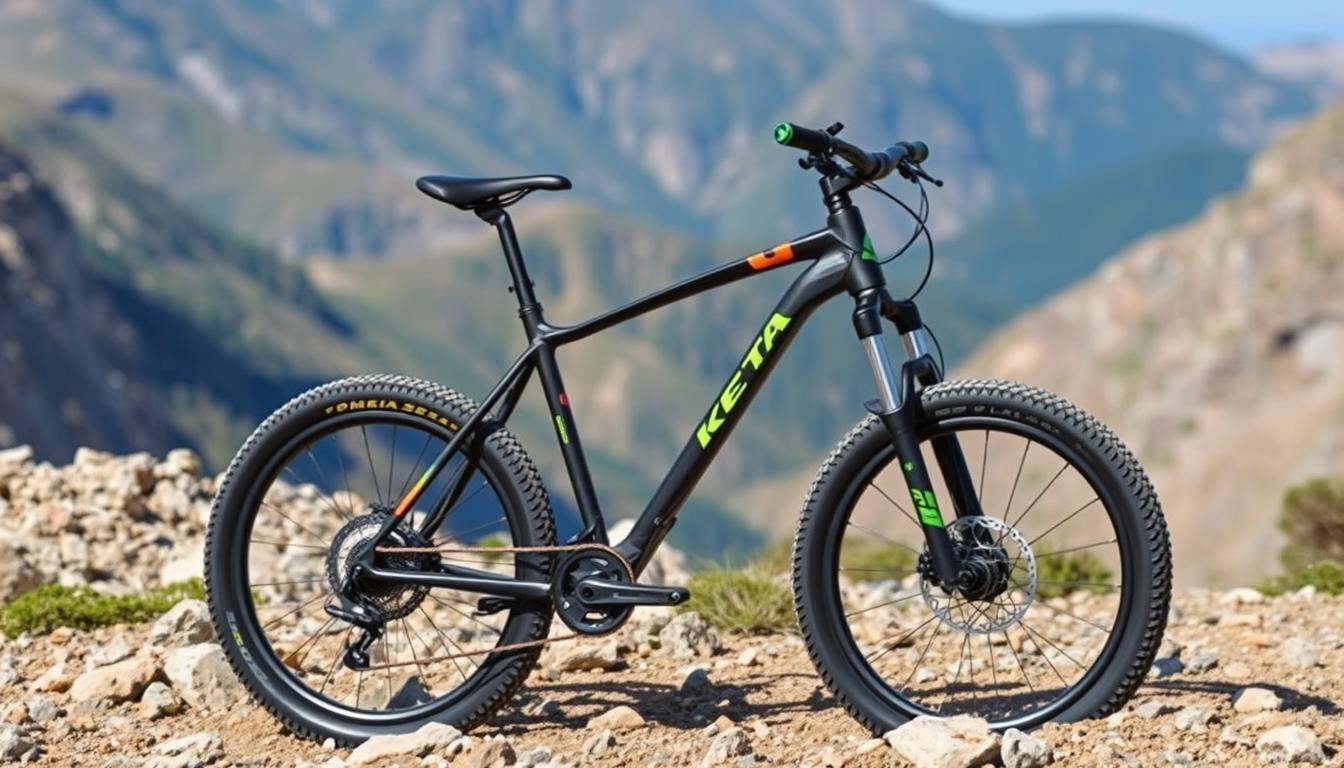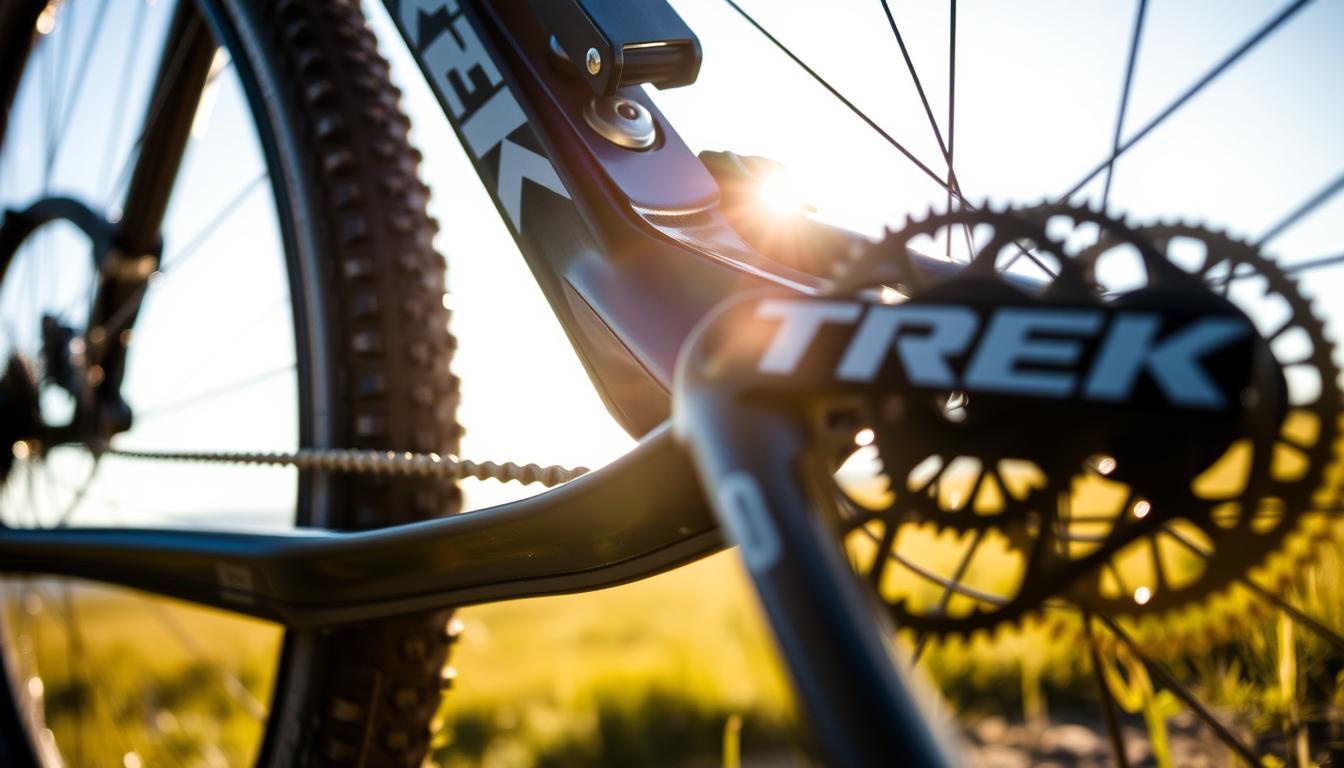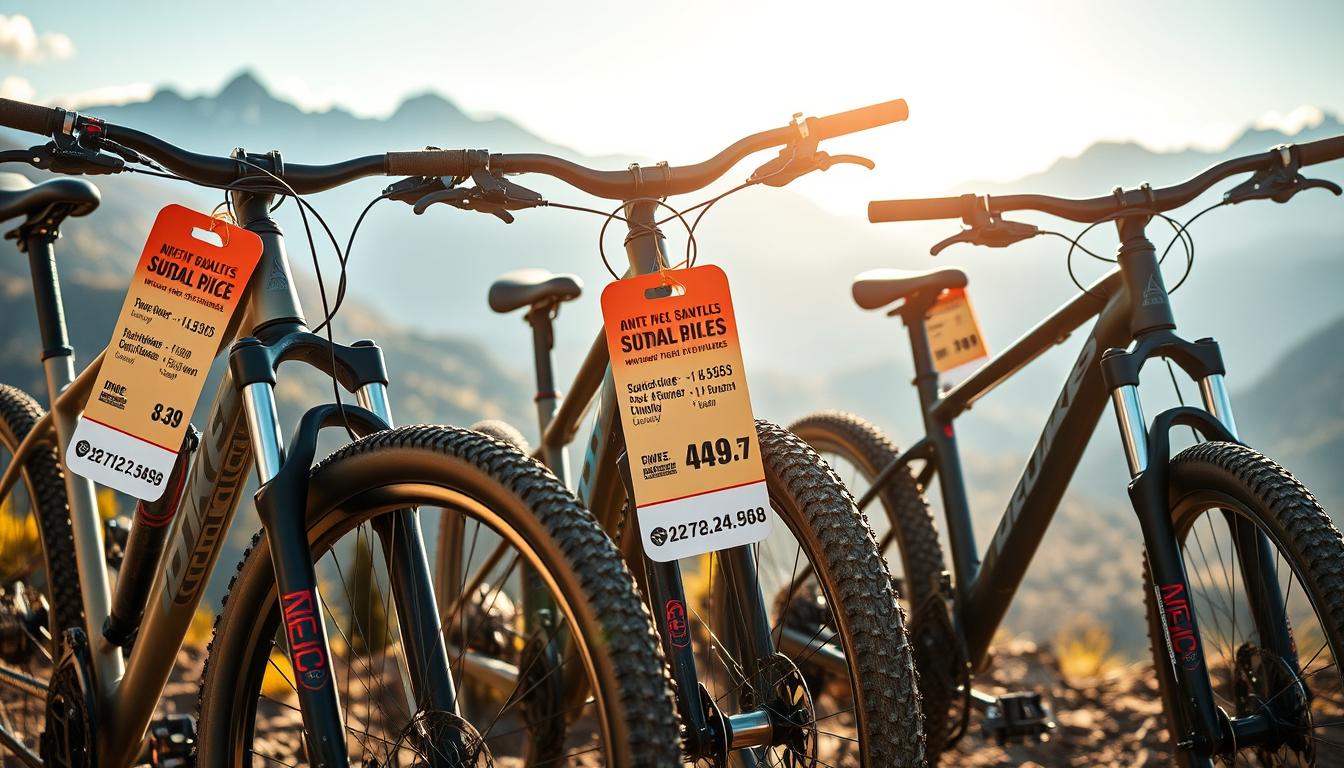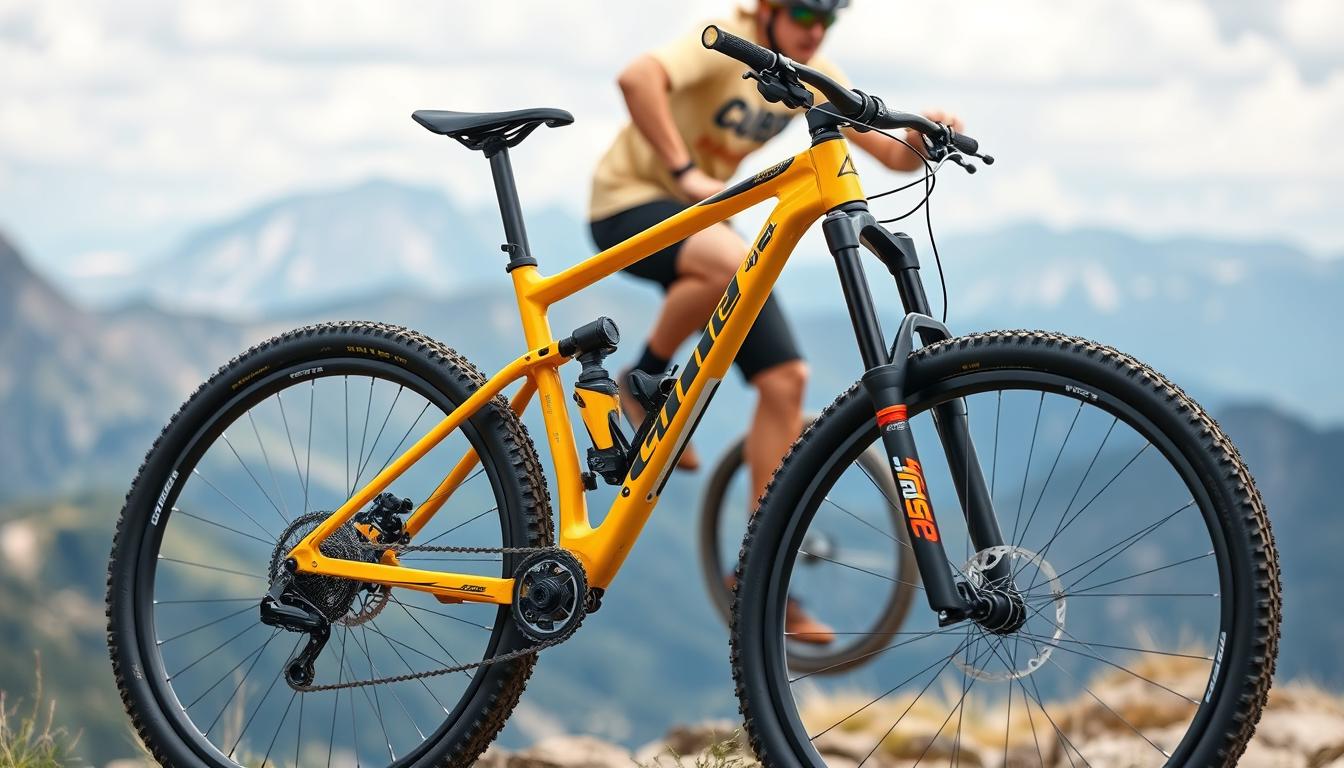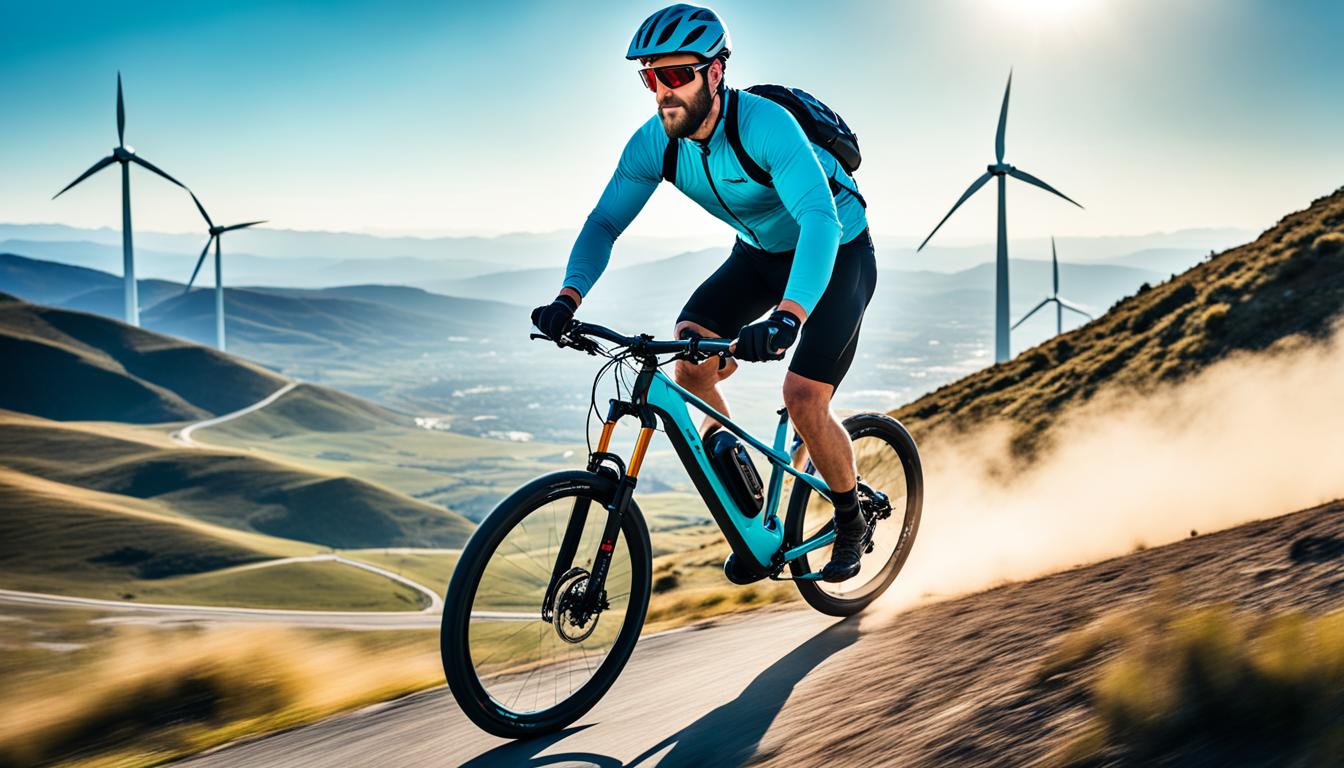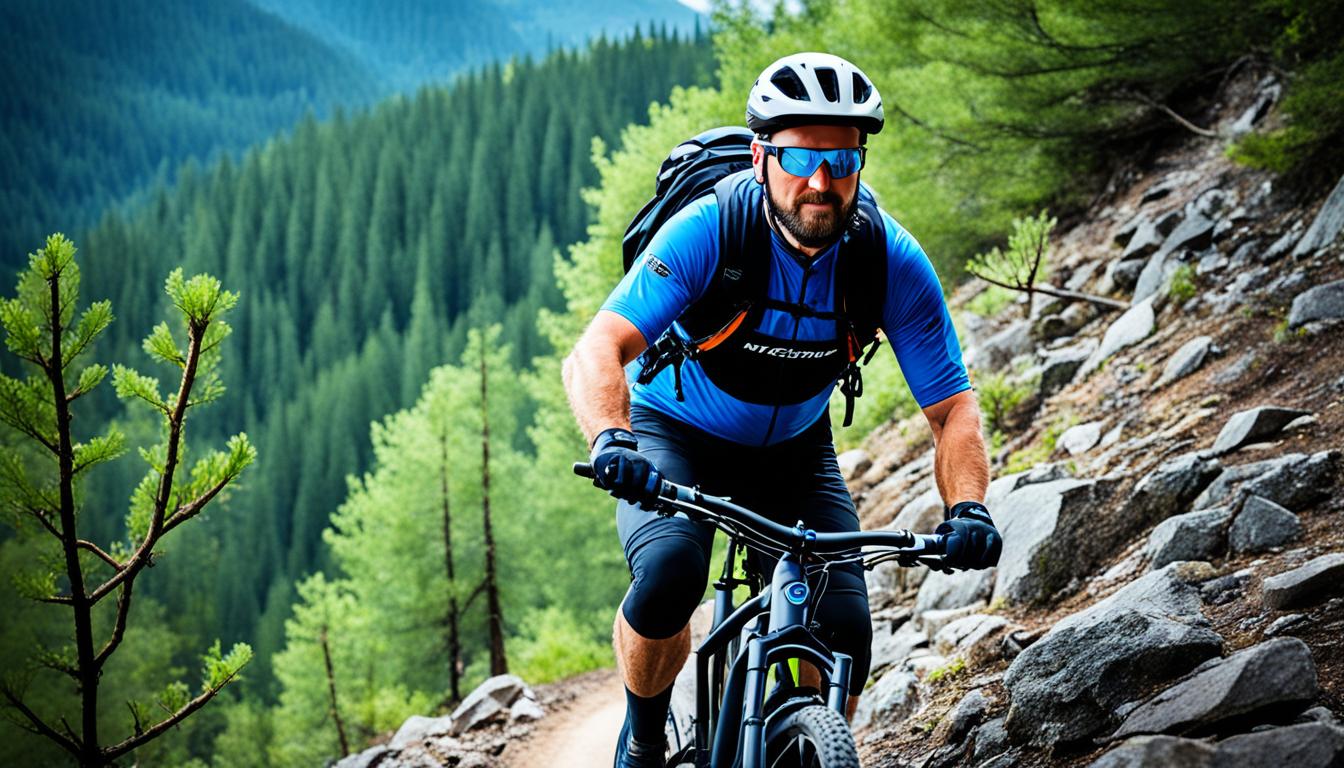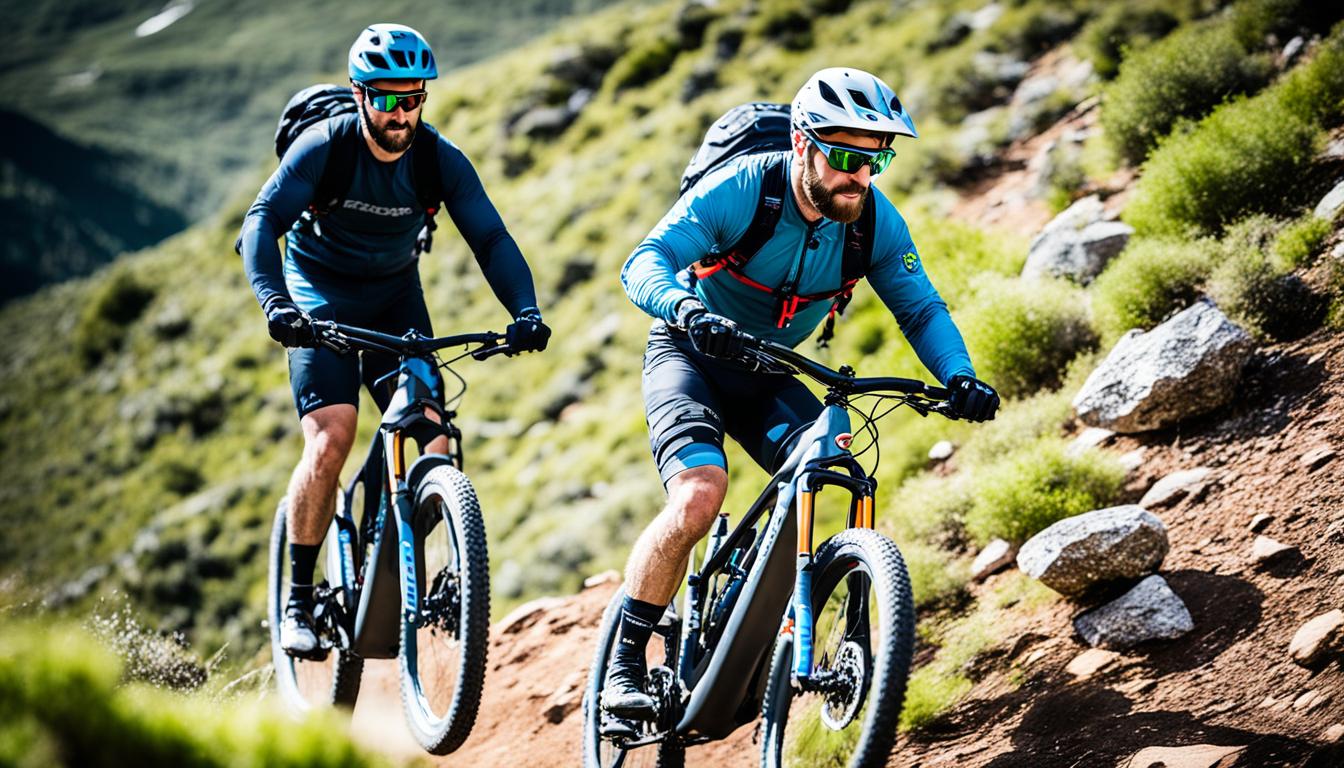Mountain biking’s popularity has soared with electric mountain bikes (EMTBs). These bikes mix adventure with ease. This makes starting out on an e-bike thrilling. Beginners find that electric bikes help with tough terrains more easily. They also let you ride longer without getting as tired as you might on regular bikes.
Many riders see they can go on more trails as they get fitter. This guide focuses on important EMTB tips for first-timers. It will help new bikers start their mountain biking trips well. They’ll learn how to pick the right bike and keep enjoying their rides. Be prepared to see stunning views and varied landscapes on your biking adventures!
Understanding E-Bikes and Their Advantages
An electric mountain bike, or EMTB, blends tough performance with advanced technology. These bikes thrive off-road, appealing to those who seek adventure. For those wondering about EMTBs, their features make them attractive to bike lovers.
What is an Electric Mountain Bike (EMTB)?
An EMTB boosts your pedalling power, making it easier to tackle steep climbs and rough paths. They come with a strong motor, often 250 watts, providing steady assistance. This elevates your ride. They adapt to various terrains with their strong suspensions and large tyres, ensuring great grip and stability.
Benefits of E-MTBs Over Traditional Mountain Bikes
E-MTBs have several plus points. They let riders go further without getting too tired, as the pedal assist helps with uphill battles. Compared to regular bikes, EMTBs stand out. They ensure better balance and control with their wide tyres and stable design, making it easier to ride on challenging trails. Thus, they make mountain biking more fun and accessible to many.
Choosing Your First E-Bike for Mountain Biking
Choosing the right e-bike means looking at prices and key features. For new mountain bikers, this knowledge can make biking more fun. It also helps get the best value and performance.
Price Range and Value for Money
The price for EMTBs ranges from £2,000 to £5,000. The cheaper ones, around £3,000, might not last long or perform well off-road. The Polygon Siskiu T7E and Decathlon Rockrider E-Expl 520S are great value. They have ratings of 9/10 and 8/10. It’s wise to spend a bit more for a reliable ride that will last and still offer good features and build quality.
Top Features to Look For
There are key features to consider when picking your first e-bike:
- Sturdiness: A tough frame means the bike can handle rough trails.
- Motor Type: You have to decide if a hub or mid-drive motor fits your riding style better.
- Suspension Systems: Choose between a hardtail and full-suspension for more comfort and better control.
- Battery Capacity: Aim for options like Decathlon’s Stilus E-Big Mountain. It has a Bosch Performance CX motor with a 750Wh battery for longer rides.
- Weight: While most e-bikes are over 20 kg, some newer ones might be lighter, about 14 kg.
Knowing these key features for your first electric mountain bike will help you pick a model that fits your style. It also ensures it meets your future biking needs.
e-bike mountain biking for beginners
Starting out with e-bike mountain biking is thrilling yet a bit scary. It’s important to learn key skills for a better ride on electric mountain bikes. As a newcomer, riding an e-bike offers new challenges compared to regular mountain biking.
Essential Skills for Riding an E-Bike
Skills like balancing, steering, and braking are top priority. The extra weight from the e-bike’s batteries and motors requires you to adapt how you ride. Getting used to the pedal assist helps you use the e-bike’s features well. Controlling your e-bike well boosts your confidence and comfort on rides.
Practising Techniques for Stability and Control
Begin improving your skills in safe, open areas. Start with simple exercises that focus on starting, stopping, and moving around. Then, try out turns and more complex moves. This helps you get used to the e-bike’s weight and power in a safe way. Doing this prepares you for more difficult paths.
Whether you’re after a calm ride or adventurous trails, having these basic skills matters a lot. If you want to learn more about mountain biking, visit Marmalade MTB for guides suited for beginners.
Safety Gear and Essential Accessories
Heading out on an e-MTB adventure means safety first. Riders encounter new challenges with faster speeds and different terrains. Quality safety gear reduces injury risks and increases confidence on the trails.
Why Helmets and Protective Gear are Crucial
A solid helmet is the base of e-bike safety. A good fit can lessen the chance of head injuries if you fall. For rough terrain, consider a full-face helmet. Knee pads also help protect against injuries. Wearing bright clothes makes you more visible on shared trails.
Other Accessories Every Beginner Should Consider
Next to safety gear, other accessories can make mountain biking better and safer. Essentials to have include:
- Gloves: These help with grip and protect hands if you fall.
- Padded shorts: They make long rides more comfortable.
- Bike lights: Critical for riding in the dark or at twilight.
- Hydration packs: Key for keeping hydrated, especially on long trips. Around 60% of riders carry a bladder.
- Puncture repair kit: Necessary for fixing flats on tubeless and inner-tube bikes.
- Multi-tool kit: Handy for quick repairs while out.
- Compact first aid kit: A smart choice because of the common risk of injuries.
- Extra clothing layers: Useful for changeable weather in the mountains.
- Waterproof socks: Keep your feet dry in wet conditions.
- Sunscreen: Helps prevent sunburn during long rides.
- Phone and GPS devices: Important for finding your way and in emergencies.
- Spare batteries and charger: Crucial for keeping your e-MTB going on longer rides.
Exploring Different Riding Styles and Terrain
For those new to mountain biking, it’s crucial to grasp the various riding styles. The main styles encountered by beginners are cross-country and enduro biking. Each offers distinct challenges and adventures, suited to different levels of ability and preference.
Cross-Country vs. Enduro Riding
For novices, cross-country biking is an ideal start. It involves less technical trails, perfect for enjoying nature while enhancing stamina and speed. Riders typically navigate smoother paths or fire roads, great for honing basic biking skills. Conversely, enduro biking presents a tougher challenge with its rocky terrains and steep drops. It demands good technical prowess. While enduro biking is thrilling, beginners should only attempt it if they feel ready.
What to Expect on Different Trails
Beginner trails feature easy slopes and few obstacles, perfect for those just starting out. They help build confidence. As skills improve, riders face more demanding trails. Features like steep drops and technical elements challenge even experienced bikers. It’s crucial to prioritize safety and accurately judge your abilities before tackling harder trails. For guidance, beginners should seek advice from expert bikers or check out valuable mountain biking tips.
| Riding Style | Terrain | Skill Level | Key Features |
|---|---|---|---|
| Cross-Country | Smooth trails, fire roads | Beginner to Intermediate | Speed, endurance |
| Enduro | Rocky, steep descents | Intermediate to Advanced | Technical skills required |
| Trail Riding | Mixed trails, moderate climbs | Beginner to Advanced | Versatility, comfort |
| Downhill | Steep, technical descents | Advanced | High speed on rough terrain |
| Fat Bikes | Snow, sand, loose surfaces | Beginner to Advanced | Maximum traction |
Riding Techniques Specific to E-MTBs
Learning the special e-MTB riding techniques can make a big difference in tackling different terrains. Understanding battery management for e-bikes helps riders perform better and have longer rides without stops. We’ll cover essential skills for going up and down hills, important for difficult trails.
Managing Battery Power While Riding
It’s important to manage your e-bike’s battery well, especially for new riders. You should pedal in a way that saves battery life and use the pedal assist smartly. Here are some tips:
- Check your battery often to avoid running out unexpectedly.
- Save pedal assist for tough climbs and use less on flat areas.
- Try not to stop and start too much to keep energy use efficient.
- Use lower gears on steep climbs for better control and to save power.
Climbing and Descending Hills Effectively
Using the right climbing techniques for EMTBs improves your ride and efficiency on trails. Consider these points:
- Keep a steady pace going up, leaning forward to help with grip.
- Shift gears smoothly to avoid putting too much stress on the bike.
- When going downhill, keep the tyres touching the ground for stability.
- Brake earlier than usual because e-MTBs are heavier and need more time to stop.
- Take short breaks on tough downhills to rest your muscles, using the bike’s motor to pick up speed again quickly.
Using these e-MTB specific techniques will make dealing with tough terrains more fun and easier. Knowing how to manage your battery and how to climb and descend properly will take your mountain biking to new heights.
Maintaining Your E-Bike for Long-Term Enjoyment
Getting an e-MTB means not just planning for rides but also caring for it for the long-term. Regular routine e-bike maintenance improves performance and extends your bike’s life, making every journey better. For beginners, knowing the basics of upkeep is crucial for exciting, safe adventures.
Routine Maintenance Tips for Beginners
If you’ve just got an e-bike, there are some simple checks to keep it running well. You should regularly check:
- Tyre pressure: Right tyre pressure reduces punctures and helps your bike perform its best.
- Brake function: E-bikes need more braking power, so ensure your brakes are always in good condition.
- Chain lubrication: The chains on E-MTBs get a lot of wear. Keep them clean and well-oiled.
Doing these e-bike maintenance for beginners tasks will lead to smoother and safer rides.
Understanding Battery Care and Lifespan
The battery is key to your e-MTB’s power. Handling it right can seriously extend its life. It’s best to keep its charge between 20% and 80%, which can double its life. While not using it, a 50% charge is ideal, away from very cold or hot places.
Proper battery care for e-MTB preserves your bike and boosts your riding experience. Knowing the effects of temperature on your battery is very important, especially in colder areas where it might not work as well.
Conclusion
Our journey into electric mountain biking ends here, but it’s key to look at what we’ve learned. E-MTBs bring the thrill of exploring different terrains to life, especially for beginners. With their special features like fat tires and strong brakes, these bikes offer a better ride than traditional ones.
We’ve covered much ground, from picking the right bike to learning necessary riding skills. Climbing or going down rough paths, the mix of electric help and your effort makes the trip fun. Safety first: always wear the right gear and keep an eye on your battery.
Electric mountain biking opens up a new world of outdoor adventure. By following the tips shared here, like those in the ultimate guide to electric mountain biking, you’re in for an exciting experience. It’s a blend of fun and learning, making the e-MTB adventure one to remember. Looking to buy an e-bike? Read this article before you get one.
FAQ
What is an Electric Mountain Bike (EMTB)?
An Electric Mountain Bike (EMTB) is built for off-road adventures. It features pedal assist to help riders on tough terrains. These bikes are stronger and have special tyres and suspension for rugged rides.
What are the benefits of E-MTBs over traditional mountain bikes?
E-MTBs help you explore further with less effort. They make it easier to go up steep trails. This means more fun and less strain on rides.
How much should I expect to pay for a good EMTB?
Good EMTBs cost between £2,000 and £5,000. Mid-range options are best for beginners. They offer value without compromising on performance for off-road use.
What key features should I look for in my first E-MTB?
Key things to check include the bike’s frame sturdiness, motor type, and suspension. These choices will shape your ride and fit your style.
What essential skills do I need for riding an E-MTB?
Start with the basics like balancing and steering. Learn to brake well. Getting used to pedal assist takes time due to the bike’s weight and control.
How can I improve my stability and control when riding?
Improve by practising in safe areas. Focus on starting and stopping smoothly. Mastering weight and power helps with confidence on tougher terrains.
Why is safety gear crucial when riding an E-MTB?
Safety gear protects against injuries. Since E-MTBs go fast, bright clothes are good for being seen. This is key on shared paths.
What accessories should every beginner consider for e-biking?
Beginners should get gloves, padded shorts, lights, and hydration packs. These make your ride safer and more comfortable.
What’s the difference between cross-country and enduro riding?
Cross-country (XC) is less technical, great for starters. Enduro trails are rougher and need more skill. Pick trails that match your level.
What can I expect on different types of trails?
Easy trails have gentle slopes. Hard ones have steep drops and obstacles. Always choose trails that suit your skill to stay safe.
How can I manage battery power while riding my E-MTB?
Use pedal assist smartly to save battery. Avoid too many stops. Check your battery often to avoid running out mid-ride.
What techniques should I use when climbing and descending hills?
Keep a steady pace and lean forward when going uphill. Going downhill, ensure your tyres keep touching the ground for control.
What routine maintenance should I perform on my E-MTB?
Check tyre pressure, brakes, and chain lubrication regularly. Good upkeep ensures your bike lasts longer and performs better.
How can I care for my E-MTB’s battery?
EMTB batteries last 3 to 5 years. Good charging habits and careful usage will keep your battery healthy longer.
